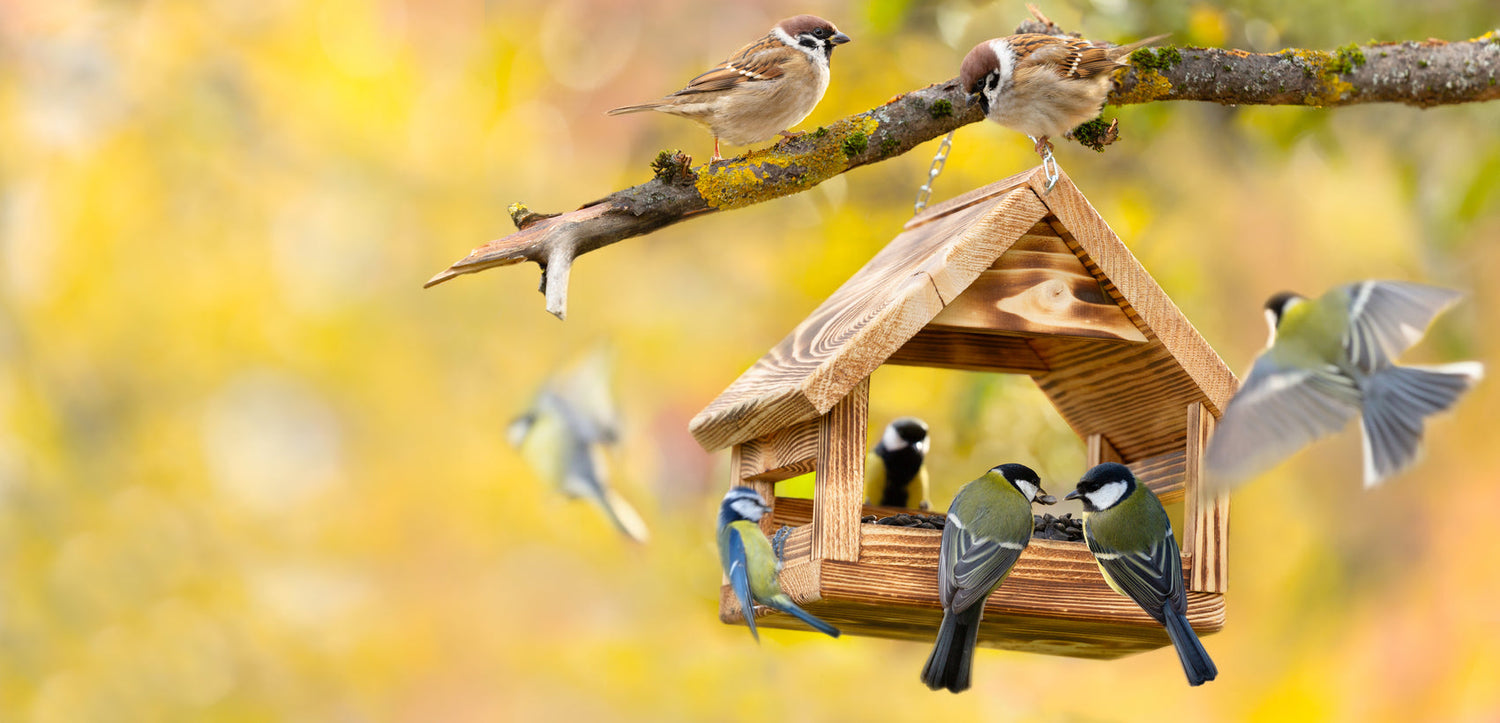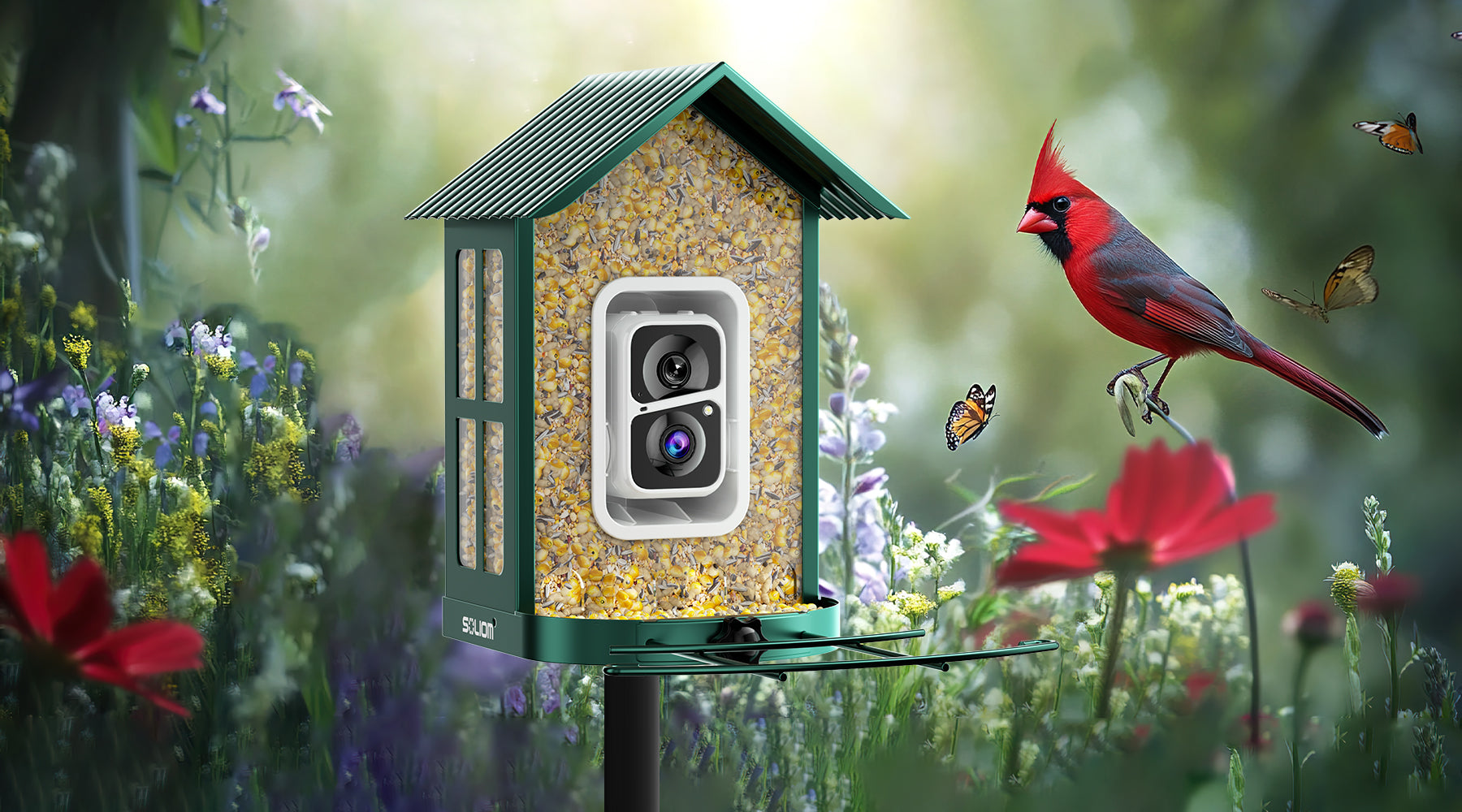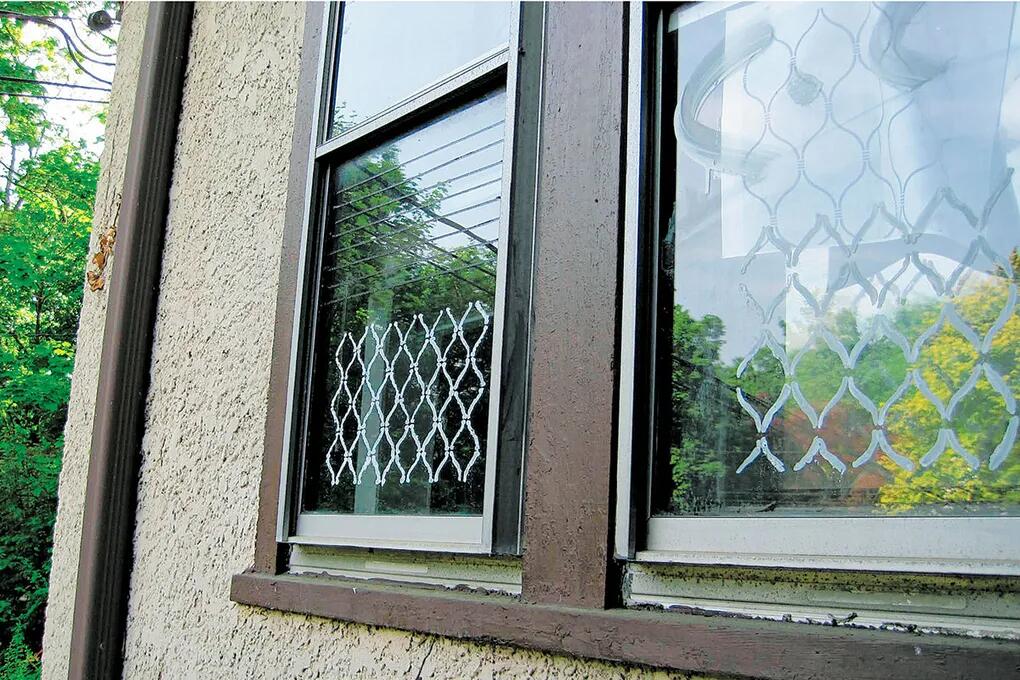As the vibrant colors of summer give way to the crisp air of fall, it's time to prepare your yard for a new season of bird feeding. Autumn is a critical time for birds as they begin to migrate, molt, and prepare for the colder months ahead. By making a few seasonal adjustments, you can ensure your yard remains a welcoming sanctuary for your feathered visitors. Here’s how to get your outdoor space ready for fall bird feeding.
1. Transition to Fall Bird Feeding Favorites
As summer ends, the types of food birds seek out will change. While some birds migrate, others prepare for winter by bulking up. Replace your summer offerings with high-energy foods like black oil sunflower seeds, peanuts, and suet cakes. These nutrient-rich options will help birds store the fat they need for migration or to survive the winter.
2. Offer No-Melt Suet
Suet is a fall favorite for many birds, providing the fat and protein they need to keep their energy up as the temperatures drop. To prevent it from spoiling in warmer early fall days, opt for no-melt suet cakes. These will attract a variety of birds, including woodpeckers, chickadees, and nuthatches, and ensure they get the nourishment they need.
3. Set Up Fruit and Nut Feeders
Autumn is harvest time, and birds are on the lookout for natural food sources like berries and nuts. You can mimic nature by offering dried fruits like raisins or cranberries and nuts like walnuts or pecans. These treats are especially appealing to migrating birds and those stocking up for winter.
4. Adjust Your Feeder Placement
As the days grow shorter and the sun's intensity wanes, consider moving your feeders to sunnier spots in your yard. This not only keeps the feeding area warm but also helps prevent seed from becoming damp and moldy. Positioning feeders near shrubs or trees also provides birds with a safe space to hide from predators.
5. Keep Feeders Clean
Fall is a busy time for birds, and more frequent visits to your feeders mean they need to be kept clean to prevent the spread of disease. As temperatures cool, you can reduce the cleaning frequency to every two weeks, but still, ensure that your feeders remain free of moldy seed and debris. A clean feeder is essential to a healthy bird population.
6. Provide Fresh Water Sources
Even as the temperatures cool, birds need a reliable water source for drinking and bathing. In fact, as natural water sources begin to freeze later in the season, your birdbath may become even more popular. Keep it filled with clean water, and consider adding a heater to prevent it from freezing as winter approaches.
7. Let Your Yard Go Wild
In fall, birds seek out areas where they can find food, shelter, and nesting materials. Allowing a part of your yard to remain unmanicured can provide a habitat rich with insects, seeds, and cover. Let fallen leaves pile up, leave seed heads on plants, and refrain from trimming back shrubs. These actions create a haven for birds as they prepare for winter.
8. Keep Your Cat Indoors
Fall is a critical time for birds, as many are migrating or teaching their young how to forage. Cats, while beloved pets, pose a significant threat to these vulnerable birds. By keeping your cat indoors, you protect the bird population and contribute to their survival during this crucial season.
By making these simple changes, you'll create a fall-friendly yard that not only supports your local bird population but also allows you to enjoy the beauty and diversity of autumn birdlife. So, grab your binoculars, fill those feeders, and get ready for a season of rewarding birdwatching.
1. Transition to Fall Bird Feeding Favorites
As summer ends, the types of food birds seek out will change. While some birds migrate, others prepare for winter by bulking up. Replace your summer offerings with high-energy foods like black oil sunflower seeds, peanuts, and suet cakes. These nutrient-rich options will help birds store the fat they need for migration or to survive the winter.
2. Offer No-Melt Suet
Suet is a fall favorite for many birds, providing the fat and protein they need to keep their energy up as the temperatures drop. To prevent it from spoiling in warmer early fall days, opt for no-melt suet cakes. These will attract a variety of birds, including woodpeckers, chickadees, and nuthatches, and ensure they get the nourishment they need.
3. Set Up Fruit and Nut Feeders
Autumn is harvest time, and birds are on the lookout for natural food sources like berries and nuts. You can mimic nature by offering dried fruits like raisins or cranberries and nuts like walnuts or pecans. These treats are especially appealing to migrating birds and those stocking up for winter.
4. Adjust Your Feeder Placement
As the days grow shorter and the sun's intensity wanes, consider moving your feeders to sunnier spots in your yard. This not only keeps the feeding area warm but also helps prevent seed from becoming damp and moldy. Positioning feeders near shrubs or trees also provides birds with a safe space to hide from predators.
5. Keep Feeders Clean
Fall is a busy time for birds, and more frequent visits to your feeders mean they need to be kept clean to prevent the spread of disease. As temperatures cool, you can reduce the cleaning frequency to every two weeks, but still, ensure that your feeders remain free of moldy seed and debris. A clean feeder is essential to a healthy bird population.
6. Provide Fresh Water Sources
Even as the temperatures cool, birds need a reliable water source for drinking and bathing. In fact, as natural water sources begin to freeze later in the season, your birdbath may become even more popular. Keep it filled with clean water, and consider adding a heater to prevent it from freezing as winter approaches.
7. Let Your Yard Go Wild
In fall, birds seek out areas where they can find food, shelter, and nesting materials. Allowing a part of your yard to remain unmanicured can provide a habitat rich with insects, seeds, and cover. Let fallen leaves pile up, leave seed heads on plants, and refrain from trimming back shrubs. These actions create a haven for birds as they prepare for winter.
8. Keep Your Cat Indoors
Fall is a critical time for birds, as many are migrating or teaching their young how to forage. Cats, while beloved pets, pose a significant threat to these vulnerable birds. By keeping your cat indoors, you protect the bird population and contribute to their survival during this crucial season.
By making these simple changes, you'll create a fall-friendly yard that not only supports your local bird population but also allows you to enjoy the beauty and diversity of autumn birdlife. So, grab your binoculars, fill those feeders, and get ready for a season of rewarding birdwatching.




Leave a comment
This site is protected by hCaptcha and the hCaptcha Privacy Policy and Terms of Service apply.